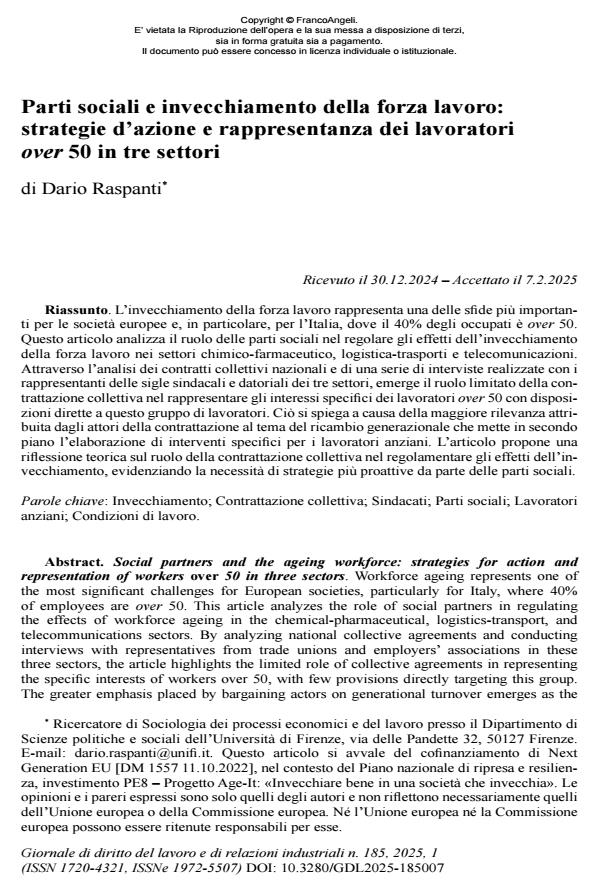Social partners and the ageing workforce: strategies for action and representation of workers over 50 in three sectors.
Journal title GIORNALE DI DIRITTO DEL LAVORO E DI RELAZIONI INDUSTRIALI
Author/s Dario Raspanti
Publishing Year 2025 Issue 2025/185
Language Italian Pages 21 P. 121-141 File size 189 KB
DOI 10.3280/GDL2025-185007
DOI is like a bar code for intellectual property: to have more infomation
click here
Below, you can see the article first page
If you want to buy this article in PDF format, you can do it, following the instructions to buy download credits

FrancoAngeli is member of Publishers International Linking Association, Inc (PILA), a not-for-profit association which run the CrossRef service enabling links to and from online scholarly content.
Workforce ageing represents one of the most significant challenges for European societies, particularly for Italy, where 40% of employees are over 50. This article analyzes the role of social partners in regulating the effects of workforce ageing in the chemical-pharmaceutical, logistics-transport, and telecommunications sectors. By analyzing national collective agreements and conducting interviews with representatives from trade unions and employers’ associations in these three sectors, the article highlights the limited role of collective agreements in representing the specific interests of workers over 50, with few provisions directly targeting this group. The greater emphasis placed by bargaining actors on generational turnover emerges as the factor driving the lack of specific measures for older workers. The article offers a theoretical reflection on the role of collective bargaining in regulating the effects of ageing, emphasizing the need for more proactive strategies from social partners.
Keywords: Ageing; Collective bargaining; Trade unions; Social partners; Older workers; Working Conditions.
Dario Raspanti, Parti sociali e invecchiamento della forza lavoro: strategie d’azione e rappresentanza dei lavoratori over 50 in tre settori in "GIORNALE DI DIRITTO DEL LAVORO E DI RELAZIONI INDUSTRIALI " 185/2025, pp 121-141, DOI: 10.3280/GDL2025-185007